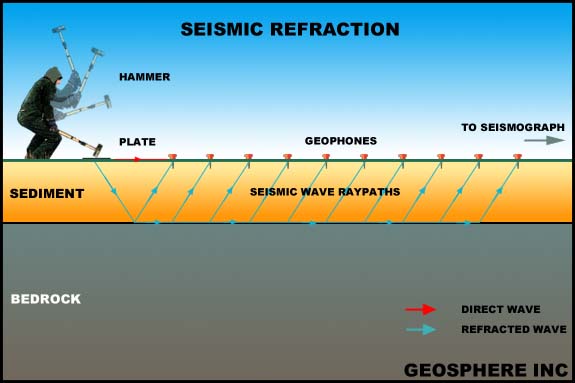


Sound moves faster in the lower layer than the upper, so at some point, the wave refracted along that surface will overtake the direct wave. This refracted wave is then the first arrival at all subsequent geophones, at least until it is in turn overtaken by a deeper, faster refraction. The difference in travel time of this wave arrival between geophones depends on the velocity of the lower layer. If that layer is plane and level, the refraction arrivals form a straight line whose slope corresponds directly to that velocity. The point at which the refraction overtakes the direct arrival is known as the "crossover distance", and can be used to estimate the depth to the refracting surface.
![]()
email:
consultants@geosphereinc.com
124 north auburn road auburn, mi 48611 tel: (989) 662-6149
fax: (989) 662-7701
copyright ©1990-2007 geosphere inc

